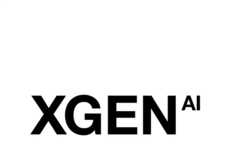
We Spoke with Xero's Eddie Kim About Machine Learning's Role in Innovation
Grace Mahas — June 28, 2022 — Business
References: xero
Xero, a cloud-based accounting software platform, has been working to support small and medium businesses with its intuitive cloud accounting solutions during a period of rapid digital transformation brought on by the pandemic. To support its quest for innovation, the brand established a new product and technology hub in Toronto.
To learn more about innovation and technology, Trend Hunter sat down with Xero’s Principal Applied Scientist in Machine Learning Products, Eddie Kim.
Can you tell us a little about yourself and what led you to your role at Xero?
I am a principal applied scientist in machine learning products at Xero, where I lead a team of scientists towards building intelligent software for millions of small businesses across the globe. Currently, my research portfolio includes state-of-the-art deep learning applications as well as machine learning systems design. Prior to my work in software for small businesses, I worked on AI for materials and chemicals development at Citrine Informatics, and received my PhD in Materials Science at MIT, where I researched applications of natural language processing in materials discovery.
I am the co-author of numerous deep learning and machine learning research articles, with 800+ citations. I’ve successfully collaborated in remote environments and in distributed team dynamics for more than five years. I am passionate about STEM outreach and open science for all.
When did you first know you wanted to get involved in the applied science and machine learning field?
When I started grad school at MIT, I had just wrapped up a few months in a startup accelerator program in Toronto (called “Next 36”). My time working closely with several startups gave me some insight into how machine learning might be the next big technology.
I initially intended to work on experimental (hands-on) battery or solar cell tech in grad school, but decided to make the shift to computational and machine learning research applied to those same fields, because I felt that this was the likely upcoming trend for the industry. I spent my PhD working on machine learning for advanced materials discovery, and that ultimately led to industry roles in applied science and machine learning.
How do you and your team generate new ideas?
My team and I collaboratively set objectives and key results, ensuring each person has a voice in the process. As a leader and manager of a team of scientists, I see my role as providing the necessary context, data, and collaborative environment to make high-quality decisions regarding which scientific ideas the team should pursue. When it comes to how we get there, we have an incredibly high level of trust amongst our team so I like to leave the decisions themselves largely up to the scientists, as they are the ones carrying out the day-to-day research.
Do you have any specific rituals for resetting creativity?
On a personal level, I like to take my dog for a walk to carefully mull over creative ideas. I also tend to encourage something similar for my team: the same activities that they may do for their own personal wellness are also great for creative scientific thinking and preventing themselves from getting stuck in a box with their brainstorming.
How do you identify trends? What resources does your team use to spot trends and consumer insights?
Academic journal articles and technical blogs are a great way to stay on top of the trends in applied science and machine learning. The other way I keep a pulse on tech trends is through my industry and academic network (e.g., via Twitter); this tends to be a bit more real-time as blog posts and academic articles often take time to write, review, and go public in a polished form.
What is the biggest challenge you face when innovating?
Staying focused and strategic is an easy principle to commit to, but very difficult to consistently execute.
Research and applied science often plays out as a very difficult prioritization game: there are many paths a team could take, and decisions must be made with conviction even in highly uncertain scenarios in order to move the team forward on a line of research.
Has there ever been an instance where another industry has influenced your work/the work of your company?
Absolutely! Our machine learning scientists and engineers at Xero come from a variety of industry and academic backgrounds, and often these folks are still connected to those communities.
When we brainstorm new ideas or innovations, we openly embrace the mental models and scientific frameworks of many different disciplines, such as computer science, physics, or biology.
What makes an innovative work culture? How do you create a culture of innovation?
Above all, innovation requires trust amongst the team. Most innovative ideas are risky and ambiguous at the start. This means that a team needs to trust each other enough to generate many ideas, and shoot down >90% of them together, and then rinse/repeat this process many times without any hard feelings.
Looking to the future, how will you continue to be a leader in innovation?
I’ve found that the most effective way to consistently innovate is to be aggressively open to ideas from completely different ways of thinking, whether that’s brought about by a diversity of cultures, academic areas of training, or geographic regions of the world.
Can you share any exciting projects you're looking forward to in the near future?
We are continuing to innovate and invest in how Xero works with financial documents using machine learning. Our goal is to be the most insightful and trusted advisor for small businesses and machine learning allows us to continue exploring new ways we can do this, so stay tuned for developments down the line.
Image Credit: Xero
To learn more about innovation and technology, Trend Hunter sat down with Xero’s Principal Applied Scientist in Machine Learning Products, Eddie Kim.
Can you tell us a little about yourself and what led you to your role at Xero?
I am a principal applied scientist in machine learning products at Xero, where I lead a team of scientists towards building intelligent software for millions of small businesses across the globe. Currently, my research portfolio includes state-of-the-art deep learning applications as well as machine learning systems design. Prior to my work in software for small businesses, I worked on AI for materials and chemicals development at Citrine Informatics, and received my PhD in Materials Science at MIT, where I researched applications of natural language processing in materials discovery.
I am the co-author of numerous deep learning and machine learning research articles, with 800+ citations. I’ve successfully collaborated in remote environments and in distributed team dynamics for more than five years. I am passionate about STEM outreach and open science for all.
When did you first know you wanted to get involved in the applied science and machine learning field?
When I started grad school at MIT, I had just wrapped up a few months in a startup accelerator program in Toronto (called “Next 36”). My time working closely with several startups gave me some insight into how machine learning might be the next big technology.
I initially intended to work on experimental (hands-on) battery or solar cell tech in grad school, but decided to make the shift to computational and machine learning research applied to those same fields, because I felt that this was the likely upcoming trend for the industry. I spent my PhD working on machine learning for advanced materials discovery, and that ultimately led to industry roles in applied science and machine learning.
How do you and your team generate new ideas?
My team and I collaboratively set objectives and key results, ensuring each person has a voice in the process. As a leader and manager of a team of scientists, I see my role as providing the necessary context, data, and collaborative environment to make high-quality decisions regarding which scientific ideas the team should pursue. When it comes to how we get there, we have an incredibly high level of trust amongst our team so I like to leave the decisions themselves largely up to the scientists, as they are the ones carrying out the day-to-day research.
Do you have any specific rituals for resetting creativity?
On a personal level, I like to take my dog for a walk to carefully mull over creative ideas. I also tend to encourage something similar for my team: the same activities that they may do for their own personal wellness are also great for creative scientific thinking and preventing themselves from getting stuck in a box with their brainstorming.
How do you identify trends? What resources does your team use to spot trends and consumer insights?
Academic journal articles and technical blogs are a great way to stay on top of the trends in applied science and machine learning. The other way I keep a pulse on tech trends is through my industry and academic network (e.g., via Twitter); this tends to be a bit more real-time as blog posts and academic articles often take time to write, review, and go public in a polished form.
What is the biggest challenge you face when innovating?
Staying focused and strategic is an easy principle to commit to, but very difficult to consistently execute.
Research and applied science often plays out as a very difficult prioritization game: there are many paths a team could take, and decisions must be made with conviction even in highly uncertain scenarios in order to move the team forward on a line of research.
Has there ever been an instance where another industry has influenced your work/the work of your company?
Absolutely! Our machine learning scientists and engineers at Xero come from a variety of industry and academic backgrounds, and often these folks are still connected to those communities.
When we brainstorm new ideas or innovations, we openly embrace the mental models and scientific frameworks of many different disciplines, such as computer science, physics, or biology.
What makes an innovative work culture? How do you create a culture of innovation?
Above all, innovation requires trust amongst the team. Most innovative ideas are risky and ambiguous at the start. This means that a team needs to trust each other enough to generate many ideas, and shoot down >90% of them together, and then rinse/repeat this process many times without any hard feelings.
Looking to the future, how will you continue to be a leader in innovation?
I’ve found that the most effective way to consistently innovate is to be aggressively open to ideas from completely different ways of thinking, whether that’s brought about by a diversity of cultures, academic areas of training, or geographic regions of the world.
Can you share any exciting projects you're looking forward to in the near future?
We are continuing to innovate and invest in how Xero works with financial documents using machine learning. Our goal is to be the most insightful and trusted advisor for small businesses and machine learning allows us to continue exploring new ways we can do this, so stay tuned for developments down the line.
Image Credit: Xero
Trend Themes
1. Machine Learning for Small Businesses - Xero's cloud accounting solutions using machine learning for small businesses provide a disruptive opportunity within the accounting industry.
2. Cross-disciplinary Innovation - Embracing mental models and scientific frameworks from multiple disciplines and industries promotes cross-disciplinary innovation opportunities.
3. Open Science for All - Encouraging open science and STEM outreach creates opportunities to broaden the diversity of perspectives and innovative ideas among scientists and engineers.
Industry Implications
1. Accounting Software - The cloud accounting solutions for small businesses using machine learning create an innovative opportunity within the accounting software industry.
2. STEM Education and Outreach - Promoting STEM education and outreach can broaden diversity and perspectives in the scientific and engineering industries to increase innovative opportunities.
3. Materials and Chemical Development - AI for materials and chemicals development creates disruptive innovation opportunities within the materials and chemical development industry.
6.9
Score
Popularity
Activity
Freshness























